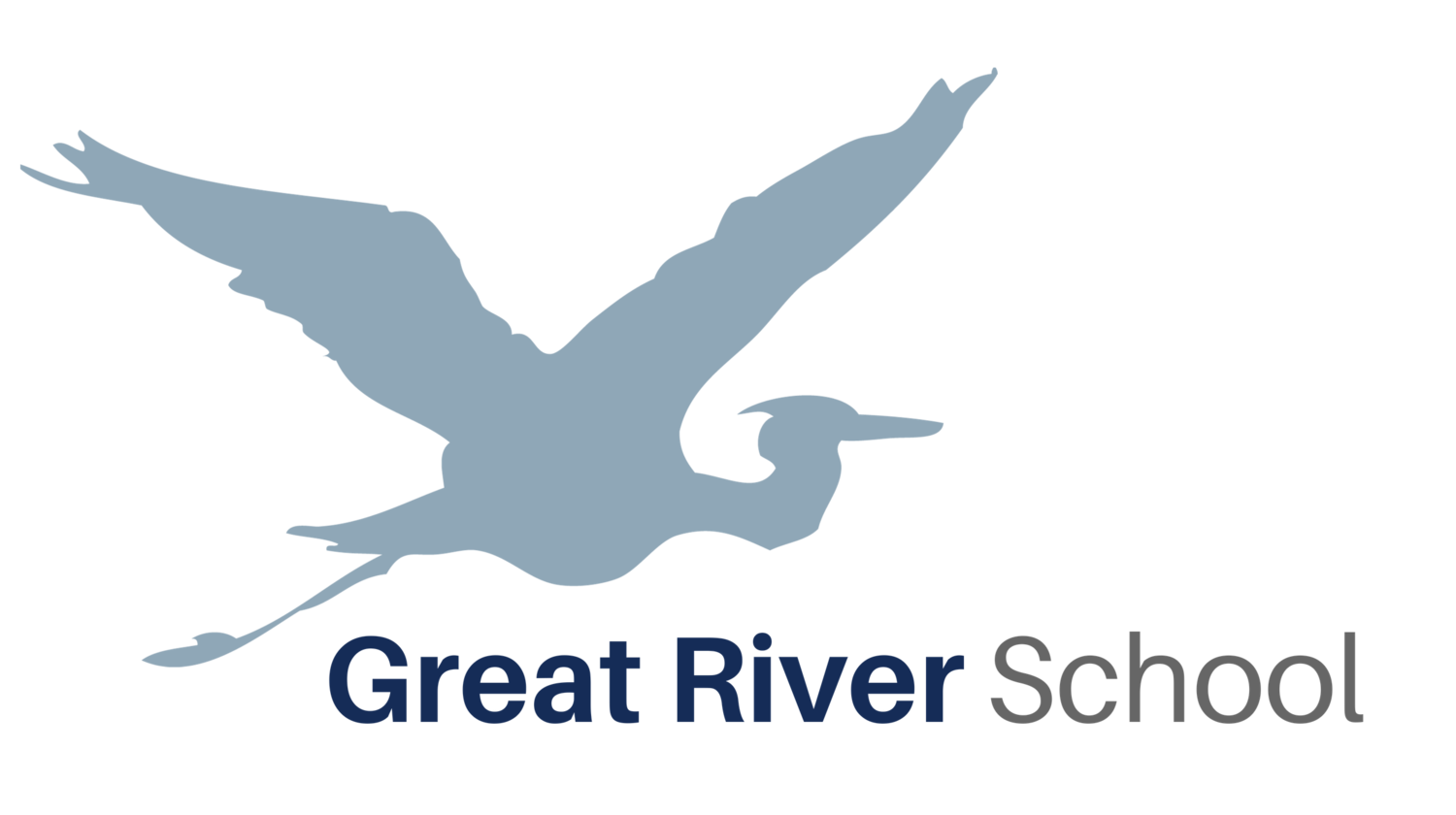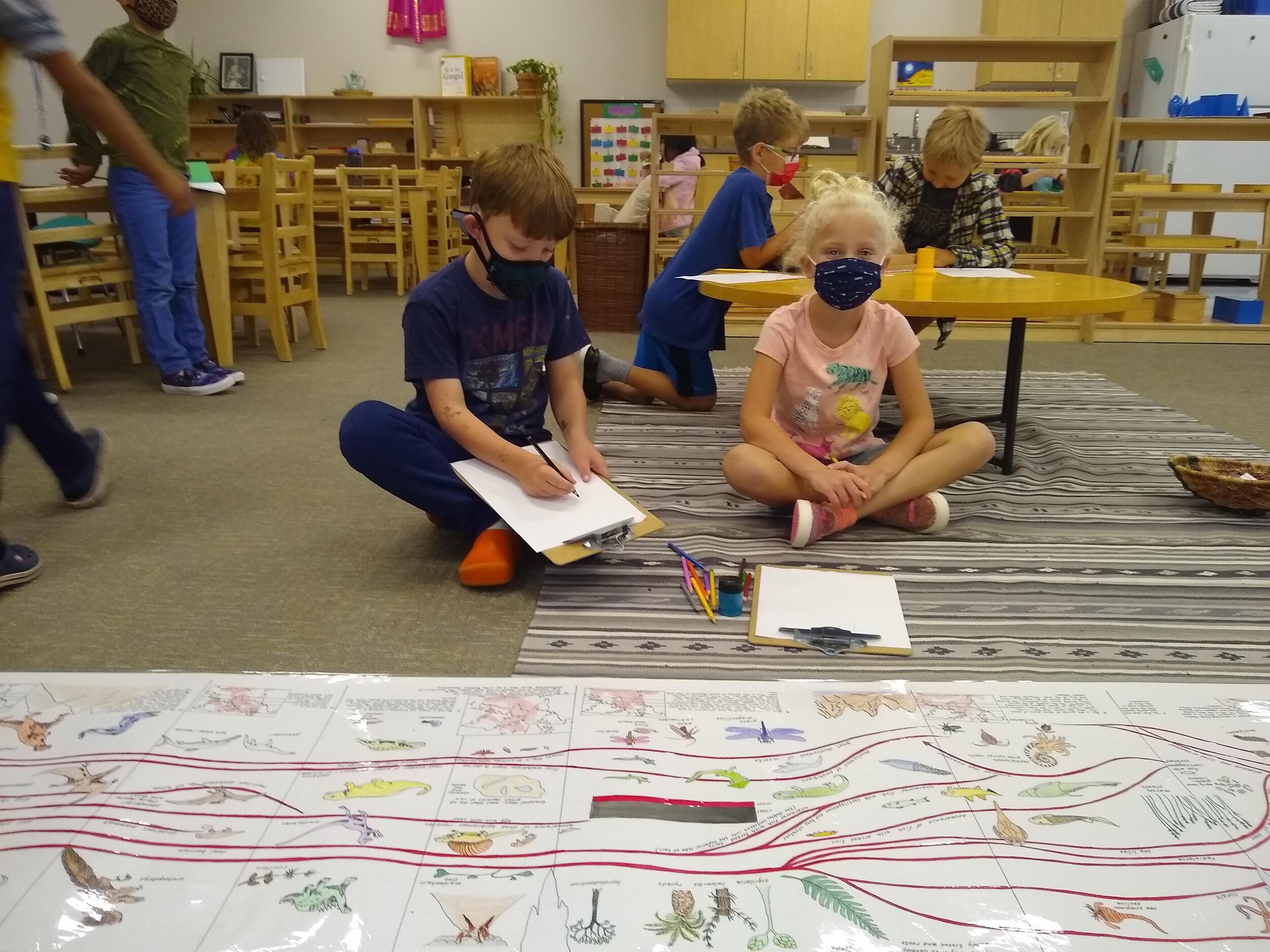written by Rachel Cupps, Minnehaha Creek guide
In the Montessori Elementary classroom, we take a different approach to education. We use Cosmic Education. Cosmic education takes a different approach than traditional education. Traditional education separates subject matter into different categories; for example, math, language arts, etc. Cosmic education integrates and uses an interdisciplinary model or framework for the elementary child to classify the details. There is no set curriculum, rather we are sharing the entire universe. We give many presentations in order to provide the whole universe. We look at the details and then the whole picture. This cycle of cosmic education continues for 6 years.
What is important about Cosmic education is that it seeks to foster gratitude towards humanity. We share the contributions of those who came before us and acknowledge that without those humans we would not live as we do today. Yet, acknowledgment is not limited to humans; this gratitude extends to all organisms. We share our Earth with a complex web of creatures including plants and animals. We provide a framework for the child to study these gifts.
The Great Lessons
The academic year is launched by a series of stories that are the entry point for the entire curriculum. They give an overall picture, they open up a view, they should fire the imagination. After the story of the universe, children are interested in anything and everything. Great stories show interrelationships and dependencies building connections while creating the foundation and framework for future learning. They are the context to fit the parts that come with additional lessons. We provide order for the children's understanding.
The story sets the mind working and explores the connections of the universe. Rather than a strict curriculum with limits and examinations we instead represent a vision of the universe, we add fuel to the burning fire of imagination and offer the notion of cosmic responsibility; the concept that every organism has responsibility. We offer the keys so that the child may explore the universe further.
The 5 Great Stories
Coming of the Universe: The first story shows the creation of the universe with the Earth as an answer to all questions. We share the laws that govern the functioning of our Earth. For example, liquids fill space and heat rises. Children are excited to follow up by learning about the solar system, volcanos, and the elements.
Coming of Life: In the second story, we see the unrest between the Rocks, Water, and Air. Life appears to preserve order and harmony on Earth. In this story, we connect geography, history, and biology. We showcase the interconnections as well as the diversity of life. We show the importance of the appearance and work of life. We use the Timeline of Life to show how life has evolved throughout our Earth’s history.
Coming of Humans: In the third story, we show that humans are the culmination of life. We share that human beings are very special and have characteristics that distinguish us from the other life on Earth. Our special gifts include our hands, our head and our heart. We show that children can make an impact on the universe.
Communication in Signs: The Alphabet: In the fourth story, we share some of the great accomplishments of humans. Humans had work to accomplish and created symbols for this work. Writing is unique to humans. We present writing as a means to pass on information.
Story of Numbers: The story of numbers examines the set of abstractions and the idea of quantity. It is a story of invention.
The great stories are for a panoramic view and structure for the universe and its functioning. We use these stories to spark the imagination, reasoning and compassion for the second plane child. The great stories are the framework. All the details come in key lessons throughout our cosmic education. Our goal is that the child has gratitude and sees the benefits of humanity. We want to empower the child to see how she can give back to humanity, the Earth and the universe.

